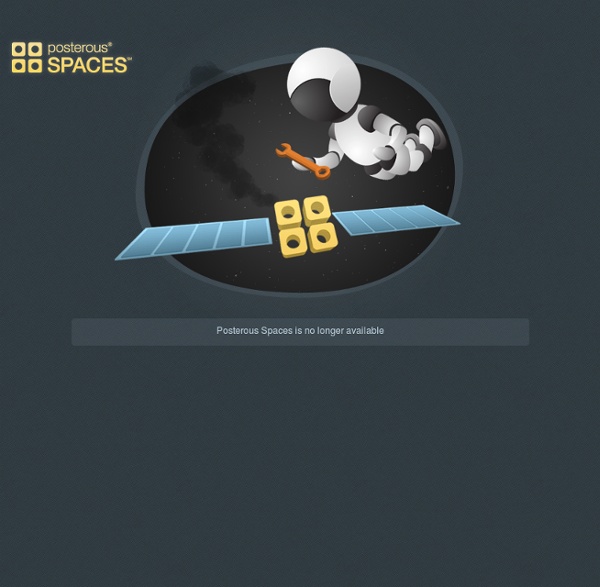



The Information Overload Paradox Just because there’s more information available, doesn’t mean one can consume more. Information Overload Put yourself in the shoes of a consumer right now. Just for a second. Imagine that it’s the 1950s. Now, fast forward to the late 1990′s. So, what do I think has happened? The Race to Curate Now, put on your Marketer Hat or your Content Creator Hat again and take a look at the Information Overload chart above. Now look at the blue line (the information available). That means we need to define our roles in this ever-growing world of content creation. The Opportunity So, where’s the opportunity? However, in order to be successful at this, your brand must be perceived as a completely objective brand in the marketplace. The real opportunity here, in my opinion, is to create – and curate – the best content focused on one specific area frequently enough that you become the one brand that consumers look to for this information. Note: I can’t remember where I first saw this concept.
The Content Strategist as Digital Curato The term “curate” is the interactive world’s new buzzword. During content creation and governance discussions, client pitches and creative brainstorms, I’ve watched this word gain traction at almost warp speed. As a transplant from museums and libraries into interactive media, I can’t help but ask what is it about this word that deserves redefinition for the web? Article Continues Below Curation has a distinguished history in cultural institutions. For a long time, we’ve considered digital objects such as articles, slideshows, and video to be short-lived. Consider some examples: NYTimes.com Topics employs content managers who sift through The Times’ archive to create new meaning by grouping articles and resources that were filed away (or distributed to library databases). More commercially, NBC Universal’s video site Hulu takes videos sourced from multiple networks and then rearranges them into collections that give a new perspective to the collection as a whole. What’s the payoff?
Blog » “Scoble’s Curation System” - How do we get there? WWE has just launched the new WWE Network to provide its 36 million fans across more than 150 countries new ways to engage around WWE programming. WWE is always listening to its fans, giving them a voice, and constantly creating new ways for the passionate fan base to engage with WWE programming and WWE Superstars. Arktan has been playing a key role in helping WWE achieve this goal. Arktan has already been powering social experiences for WWE on wwe.com, and is now doing the same for WWE Network on both the WWE App and wwe.com. WWE Network features a robust programming lineup available across all platforms via WWE.com, and through the WWE App on mobile devices, such as tablets and smartphones, and connected devices, such as Xbox 360. The WWE App drives both second-screen fan experiences, and serves as the destination for fans to talk about WWE shows before and after their broadcast. Selected tweets about WWE shows, including Raw and SmackDown, are showcased in the WWE App.
Can 'Curation' Save Media? Content Is No Longer King: Curation Is King The Curation Buzz... And PearlTrees Posted by Tom Foremski - April 12, 2010 My buddy Dave Galbraith is the first person I remember to first start talking about curation and the Internet, several years ago. He even named his company Curations, and created a tool/site for curation: Wists. And his site SmashingTelly - is great example of curation, a hand-picked collection of great videos. Today, much is written about curation and the Internet but it all seems mostly talk because we don't really have the tools we need. Robert Scoble writes about The Seven Needs of Real-Time Curators "... who does curation? Reading Robert Scoble's post on curation, it almost seemed as if he were describing PearlTrees, a company I've recently been working with in an advisory role, when he talks about "info atoms and molecules." ...what are info atoms? PearlTrees is very similar, it's a curation tool that uses "pearls" as a visual metaphor for a web site, a Twitter post, an image, or a video. More to come... Tweet this story Follow @tomforemski
Droideo: The Place For Google Android Videos Micro Persuasion: The Digital Curator in Your Future The Clip Report: An eBook on the Future of Media In the early 1990s when I began my career in PR there were clip reports. These were physical books that contained press clips. It seems downright archaic now but that’s how I learned about the press - by cutting, pasting up and photocopying clippings. My fascination with the media never abated. Today my role is to form insights into how the entire overlapped media landscape - the pros, social channels, and corporate content - is rapidly evolving and to help Edelman clients turn these learnings into actionable strategies. Today I am re-launching my Tumblr site with a new name, a new focus and a new format. It all kicks off today with a 15-page installment of The Clip Report.